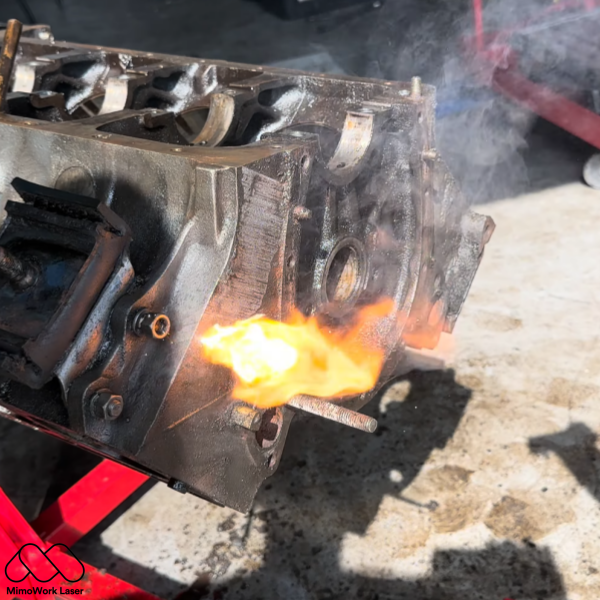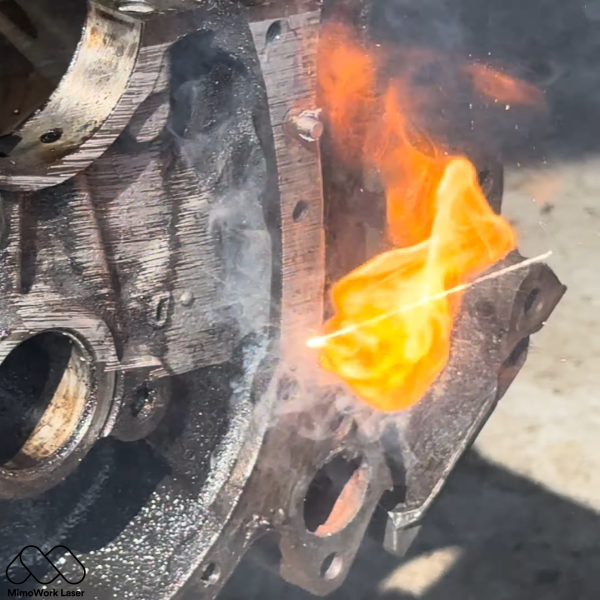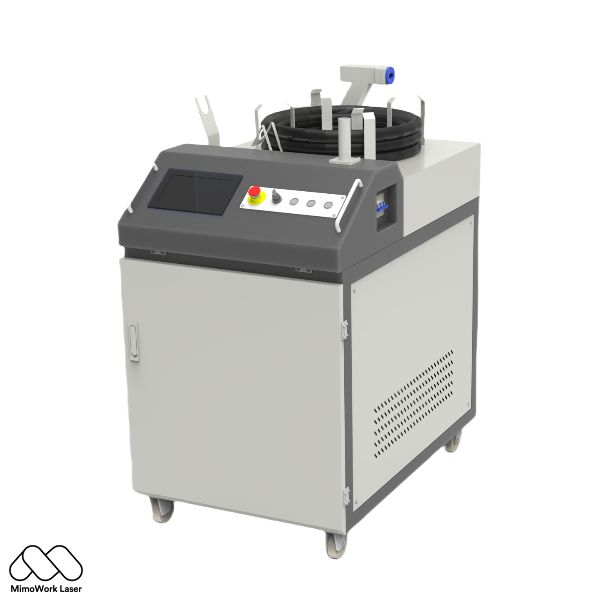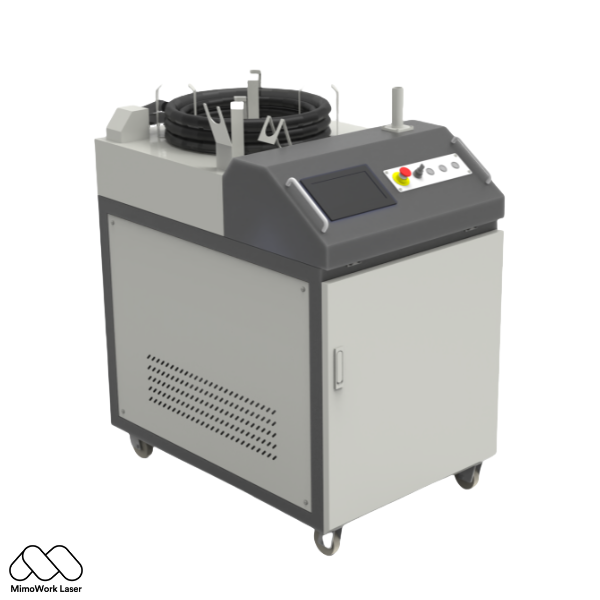Laser Cleaning Car Parts
For Laser Cleaning Car Parts, Handheld laser cleaning transforms how mechanics and enthusiasts tackle car part restoration. So Forget the messy chemicals and laborious scrubbing! This innovative technology offers a fast, precise, and environmentally friendly way to remove contaminants from a variety of car parts.
Laser Cleaning Car Parts: Why Handheld?
Handheld laser cleaners offer unmatched flexibility. You can easily maneuver the device around intricate parts, reaching tight corners and hard-to-access areas that traditional methods struggle with.
This precision allows for targeted cleaning, removing contaminants only from the desired areas, and minimizing the risk of damaging the underlying material.
Common Materials for Laser Cleaning

Laser Cleaning Car Parts
Steel: Rust, paint, and even stubborn grease are easily removed from steel parts with laser cleaning.
This restores the original finish and prevents further corrosion, extending the life of your parts.
Aluminum: Aluminum parts often develop oxidation, dulling their appearance and potentially affecting performance.
Handheld laser cleaning effectively removes this oxidation, restoring the original shine and protecting the metal from further damage.
Brass: Tarnished brass parts can be revitalized with laser cleaning. The process removes the tarnish, revealing the underlying brass's natural beauty. This is especially useful for restoring vintage car parts.
Titanium: Titanium is a strong and lightweight material often used in high-performance car parts. Handheld laser cleaning can remove surface contaminants, preparing the titanium for further processing or ensuring optimal performance.
Laser Surface Cleaning: Field-Tested Tips
Start Small: Always test the laser on a small, inconspicuous area of the part before cleaning the entire surface.
This helps determine the optimal laser settings and ensures you're not damaging the material.
Proper Safety Gear: Always wear appropriate safety goggles and gloves when operating a handheld laser cleaner. The laser beam can be harmful to the eyes and skin.
Keep it Cool: Laser cleaning can generate heat. Allow the part to cool down between cleaning sessions to prevent warping or damage.
Clean the Lens: Regularly clean the laser lens to ensure optimal performance and prevent damage to the device.

Laser Cleaning Engine (Grease and Oil)
Handheld laser cleaning is a powerful tool for mechanics and enthusiasts. It offers a faster, more precise, and environmentally friendly way to restore car parts to their original glory. With a little practice and these tips, you can achieve professional-level results and keep the car running smoothly for years to come.
Want to Know about Laser Cleaning Car Parts?
We can Help!
Is Laser Rust Removal Worth it?
Laser Rust Removal can be a Worthwhile Investment for Cleaning Car Parts
If you frequently work with car parts and need a precise, efficient method for rust removal, investing in laser rust removal could be beneficial.
If you are Looking For:
Precision: Lasers can target rust without damaging the underlying metal, making them ideal for delicate components.
Efficiency: The process is often faster than traditional methods, saving time on restoration projects.
Minimal Residue: Unlike sandblasting, laser removal generates little to no waste, making cleanup easier.
Environmentally Friendly: It typically doesn't require harsh chemicals, which can be better for the environment.
Versatility: Effective on various materials, including steel, aluminum, and even some plastics.
Is Laser Cleaning Better than Sandblasting?
Let's Compare Laser Cleaning to Sandblasting for Cleaning Car Parts
Laser Cleaning
Sandblasting
Advantages
Precision: Laser cleaning allows for targeted removal of contaminants without damaging the underlying material, making it ideal for delicate car parts.
Environmentally Friendly: It generally requires no chemicals or abrasives, reducing environmental impact and cleanup.
Minimal Waste: Produces less waste compared to sandblasting, as it vaporizes contaminants rather than removing material.
Versatility: Effective on various materials, including metals, plastics, and composites, making it suitable for a wide range of car parts.
Reduced Downtime: Faster cleaning times can lead to shorter downtime for repairs or restorations.
Advantages
Efficiency: Highly effective at removing heavy layers of rust and contaminants quickly, making it suitable for larger or heavily corroded parts.
Cost-Effective: Generally has lower initial equipment costs compared to laser cleaning systems.
Widely Used: Established technology with a wealth of resources and expertise available.
Disadvantages
Initial Cost: High upfront investment for laser cleaning equipment can be a barrier for some businesses.
Skill Requirement: Requires trained personnel to operate machines effectively and safely.
Limited Thickness: May not be as effective on thicker layers of rust or paint compared to sandblasting.
Disadvantages
Material Damage: Can cause surface damage or alter the profile of car parts, especially on softer materials.
Waste Generation: Produces a significant amount of waste that must be managed and disposed of properly.
Health Risks: Dust and particulate matter generated during the process can pose health risks to operators if proper safety measures are not taken.
Limited Precision: Less precise than laser cleaning, which can lead to unintended damage on intricate components.
Does Laser Cleaning Damage Metal?
When Done Correctly, Laser Cleaning Does NOT Damage Metal
Handheld laser cleaning can be a highly effective method for removing contaminants, rust, and coatings from metal surfaces.
However, whether it damages the metal depends on several factors:
Higher power settings can cause more significant surface damage. Choosing the appropriate wavelength for the material being cleaned is crucial. Different metals react differently to laser cleaning.
For instance, softer metals may be more susceptible to damage compared to harder metals.
The distance of the laser from the surface and the speed at which it is moved can affect the intensity of the cleaning process, influencing the likelihood of damage.
Pre-existing conditions, such as cracks or weaknesses in the metal, can be exacerbated by the laser cleaning process.
Can you Laser Clean Stainless Steel?
Yes, and It's an Effective Method for Cleaning Rust, Grease and Paint
Laser cleaning uses high-intensity laser beams to remove contaminants like rust, grease, and paint without damaging the underlying material.
Common Applications Include:
Engine Components: Removes carbon buildup and grease.
Body Panels: Cleans rust and paint for better surface preparation.
Wheels and Brakes: Effective at removing brake dust and contaminants.
Handheld Laser Cleaning Machine: Laser Cleaning Car Parts
Pulsed Laser Cleaner (100W, 200W, 300W, 400W)
Pulsed fiber laser cleaners are particularly well-suited for cleaning delicate, sensitive, or thermally vulnerable surfaces, where the precise and controlled nature of the pulsed laser is essential for effective and damage-free cleaning.
Laser Power: 100-500W
Pulse Length Modulation: 10-350ns
Fiber Cable Length: 3-10m
Wavelength: 1064nm
Laser Source: Pulsed Fiber Laser
Laser Rust Removal Machine (Perfect for Car Restoration)
Laser weld cleaning is widely used in industries such as aerospace, automotive, shipbuilding, and electronics manufacturing where high-quality, defect-free welds are critical for safety, performance, and appearance.
Laser Power: 100-3000W
Adjustable Laser Pulse Frequency: Up to 1000KHz
Fiber Cable Length: 3-20m
Wavelength: 1064nm, 1070nm
Support Various Languages
Video Demonstrations: Laser Cleaning for Metal
What is Laser Cleaning & How it Works?
Laser cleaning is a non-contact, precise cleaning method.
That uses a focused laser beam to remove contaminants from surfaces.
The laser beam's energy vaporizes the dirt, rust, paint, or other unwanted materials.
Without damaging the underlying substrate.
It's like using a tiny, controlled heat gun to gently lift away the unwanted material.
Laser Ablation is Better at Rust Cleaning
Laser cleaning stands out as the superior choice because it offers several advantages over traditional cleaning methods.
Non-contact & Precise: It avoids damaging the surface with harsh tools or chemicals, and it can target specific areas, leaving surrounding areas untouched.
Fast, Efficient & Versatile: Laser cleaning can remove contaminants quickly, saving time and resources, and it can be used on a wide range of materials, including metals, plastics, ceramics, and stone.
Environmentally Friendly: It doesn't use harmful chemicals or produce hazardous waste.
These benefits make laser cleaning the ideal solution for various applications, from industrial cleaning to restoration and art conservation.



